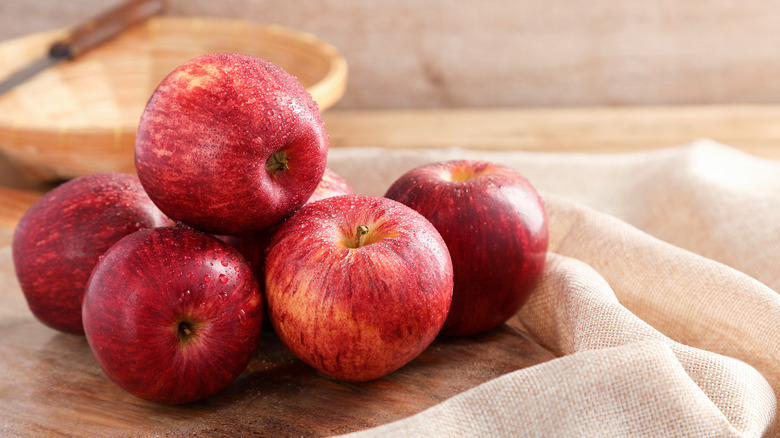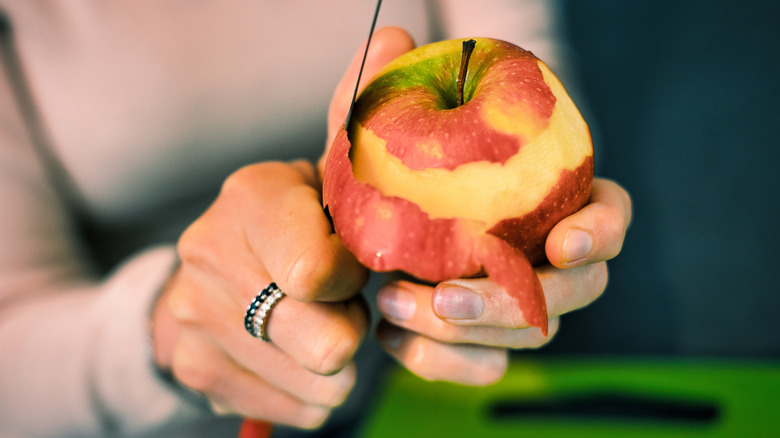Why You Should Stop Peeling Apples
Whether they're baked in a pie or sliced up for a snack, apples are a popular fruit enjoyed by people of all ages. In fact, the International Fresh Produce Association reported that in 2021, apples were tied with grapes for the third most purchased fruit in the United States. The prime time for visiting an orchard to pick your own bushel of apples is the fall, though some varieties may be ripe as early as August or as late as November, states Home for the Harvest.
People might peel apples for a variety of reasons. While some may not like the texture, others may be concerned about pesticides used on crops during the growing process (O-Cedar suggests washing the fruit in a baking soda bath just before you eat it instead of peeling). While it may seem easier to peel off the skin and not have to worry about it, you could be losing out on an important aspect of the apple if you discard the peel.
Some essential nutrients are found in the skin
By peeling the skin and only eating the inner apple, you could be missing out on some essential nutrients found in the skin. The skin of the apple contains all of the folate found in the fruit as well as a majority of the vitamins E and K, half the iron, and a third of the fiber, per Livestrong. According to Healthline, an apple with the skin on contains 20% more calcium and up to 19% more potassium than one without.
The peel also contains soluble and insoluble fibers, which can help you feel fuller faster and aid in the digestive process. It is also nearly three-quarters of the apple's antioxidants, which help limit the risk of disease by reducing cell damage (via University of Illinois). The next time you grab an apple for a quick, healthy snack, save the skin and enjoy the full dose of vitamins and nutrients from your fresh fruit.

